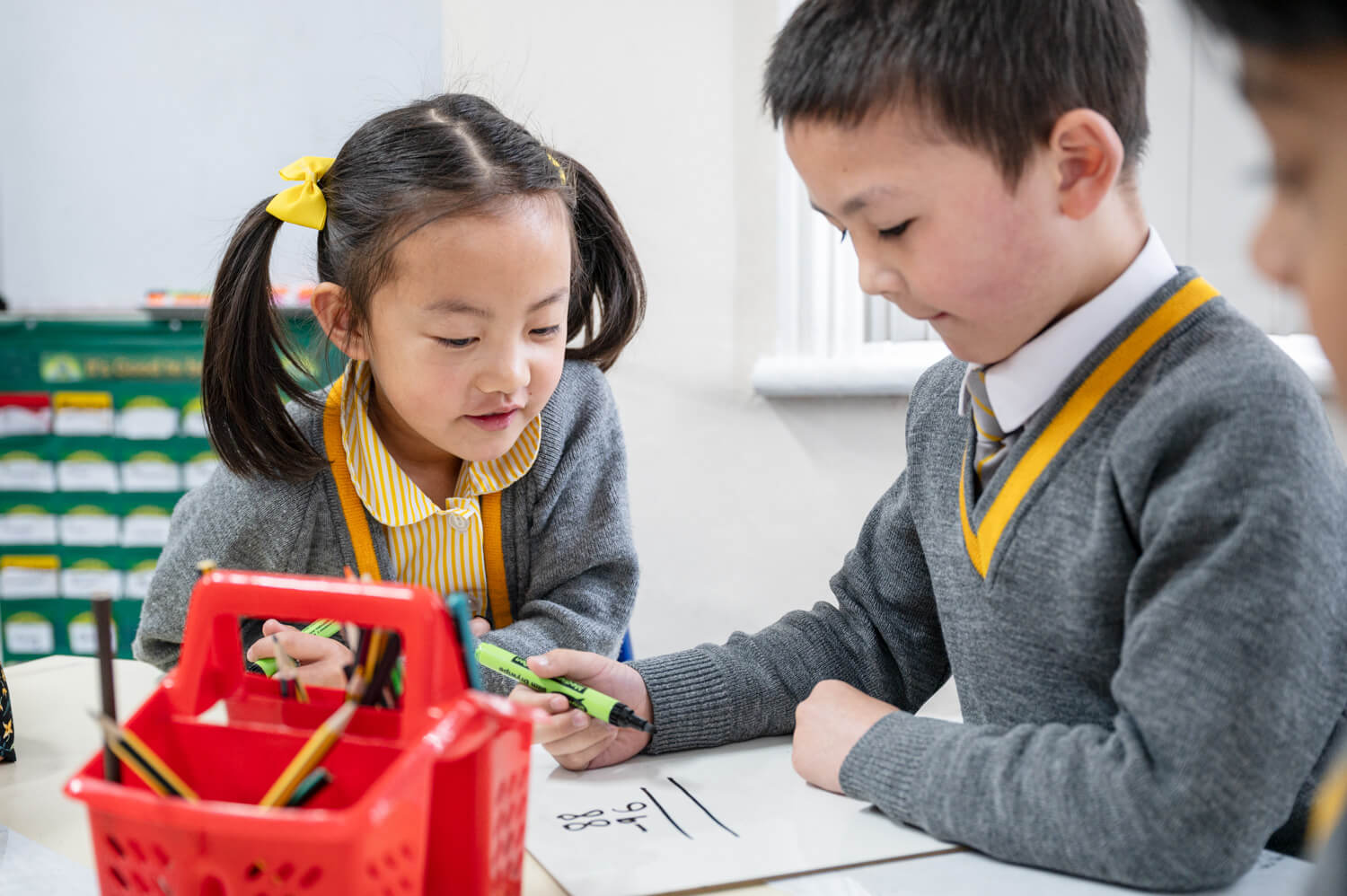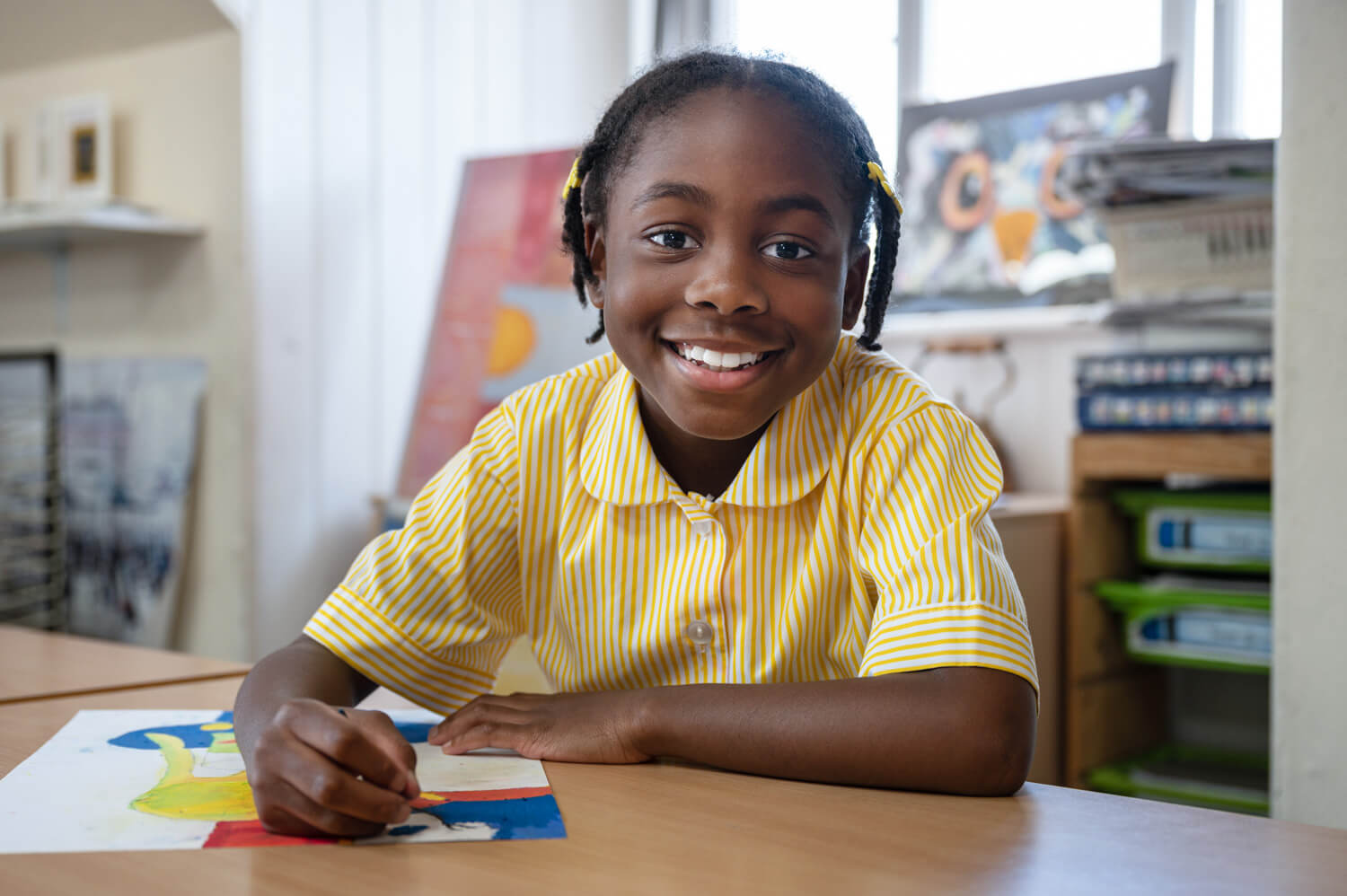An enriched learning environment
In Junior Years our dedicated team is committed to nurturing young minds in a supportive and engaging environment. With a focus on holistic development, we offer a rich curriculum that inspires curiosity and fosters a love for learning.
Explore our Junior Years program, where your child will embark on an exciting educational journey filled with exploration, creativity, and the building blocks for a bright future.
Jump down to:
OUR APPROACH
Encouraging academic success
In our Juniors, children can enjoy the highest standards of teaching together with the individual attention that they need in the lead-up to their 11+ examinations at the end of Year 6. We support and encourage the children to build the strongest possible foundations for a school life full of excitement, interest and above all opportunity.
Parent consultations with the Headteacher and staff are a priority to support those important decisions parents need to make. This is a partnership where pupils, teachers and parents talk about options and choices.
Specialist Teaching
Our curriculum is designed to meet our objective of preparing children for senior schools. In addition, we attach great importance to providing all children with a balanced and broadly based education, from their first days in the Kindergarten through to the age of 11.
In Years 3 and 4, form tutors continue to be responsible for teaching English, Maths & PSHE, although the children now receive specialist teaching in ICT, Science, History, Geography & Religious Education as well. These two years see a consolidation of the Key Stage 1 work as the children begin to prepare for their 11+ entrance tests and Key Stage 2 SATs. In Years 5 and 6, Breaside’s unique preparation for entrance exams to over 20 different Secondary School is key.
curriculum
Science
Science is taught by a specialist teacher supported by a science technician in a dedicated, fully resourced vibrant classroom to pupils from Year 2 to Year 6. We have an interactive whiteboard, a dedicated set of i-pads and access to numerous and varied IT resources to support the teaching of science topics.
French & Spanish
French & Spanish are taught from Kindergarten to Year 6 and an annual trip to France in Year 6 gives our children the opportunity to practise the language skills that they have learnt. Spanish club is also on offer and as a school we are very aware of the future needs of our children in the global economy in which we live.
Art & Design Technology / Food Technology
All Breaside children participate in art, design technology and craft activities where they can develop their powers of observation, technical skill, presentation and individual creativity. As part of their curriculum food technology is now also included, and in addition there are cookery clubs for both Infants and Juniors.
Join us for a Personal Tour
We warmly welcome families throughout the year, offering tailored personal tours on a day that suits you, including school holidays.
PASTORAL CARE
Enjoy the highest standards of teaching
In Years 3, 4, 5 and 6 form teachers continue to be responsible for the pastoral care and welfare of the children in their respective form. Year 3 children see a consolidation of the Key Stage 1 work as the children begin to prepare for their 11+ entrance tests and Key Stage 2 SATs. Breaside children can enjoy the highest standards of teaching together with the individual attention that they need in the lead up to their Entrance Tests and 11+ examinations in Year 6.
We're extremely proud of our continued success in achieving the highest standards of education and ensuring every child reaches their full potential and gains a place in the best possible school for the individual.
TRIPS
Exploring beyond the classroom
We believe that learning does not just take place within the classroom and a variety of trips to places of interest are organised for each year group throughout the year. In Year 5, the pupils are offered the opportunity of taking part in an activities week in Dorset, where they can try a variety of outward-bound activities.
An annual trip to France in Year 6 gives our children the opportunity to practise the language skills that they have learned.




